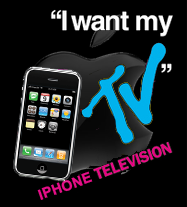 The dog days of August lend themselves to kicking back and letting the world slide by. Since the advent of the Web 2.0 ecosystem, they’ve also been the province of a tech company version of the summer shows the networks play off – failed pilots, reality programming being tried out for the Big Show or another writer’s strike, and ratings stinkers that can be buried outside of Sweeps months.
The dog days of August lend themselves to kicking back and letting the world slide by. Since the advent of the Web 2.0 ecosystem, they’ve also been the province of a tech company version of the summer shows the networks play off – failed pilots, reality programming being tried out for the Big Show or another writer’s strike, and ratings stinkers that can be buried outside of Sweeps months.
But the DVR has changed everything, in the process eliminating the notion of special sweeps periods and the upfronts where the new season is hawked. Instead, every day is Premiere Month, with the quality of the audience becoming a function of its trackability. The more that you can see the gestures of the audience in real time, the less you need to attract their attention and the more you can market it to the advertisers. In that context, a show played back is no longer a second class citizen; instead the metadata about when you played it back and what was going on at that time form a more powerful indicator of intent, and the common signature of like-minded users a highly valued target.
In fact, television and music content have become more like software than they are different, and the release of the iPhone App Store is a significant new platform for the intersection of what formerly were seen as two different products.
What kinds of programming will emerge? Perhaps a kind of reality show with mobile devices, where contestants roam the real world and use their phones as transaction wands to indicate their interest (or lack of it) in products, events, personalities, and so on. Team behavior is aggregated and mined by matching demographic profiles with reactions to produce “answers” to questions about news of the day, topic swarms on Twitter or other social networks, the race for the White House.
In effect, a new hyper reality show becomes possible, where the App Store is the gateway for an Adsense-like version of Big Brother that leaves the house and breaks out into the virtual community. The device and bandwidth is subsidized by the show, so that Apple can turn on the video aspects of the phone to produce footage, and the community could even be encouraged to provide production support for cataloging and editing the show together via the app and the phone.
Read the full rant on TechCrunchIT